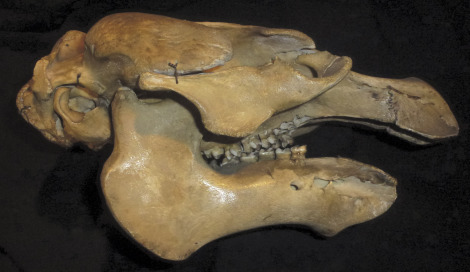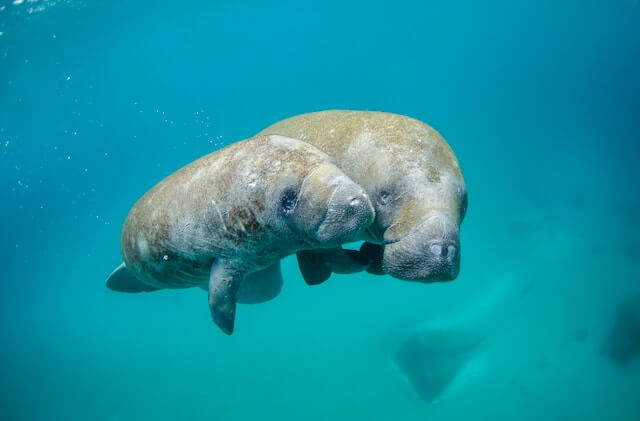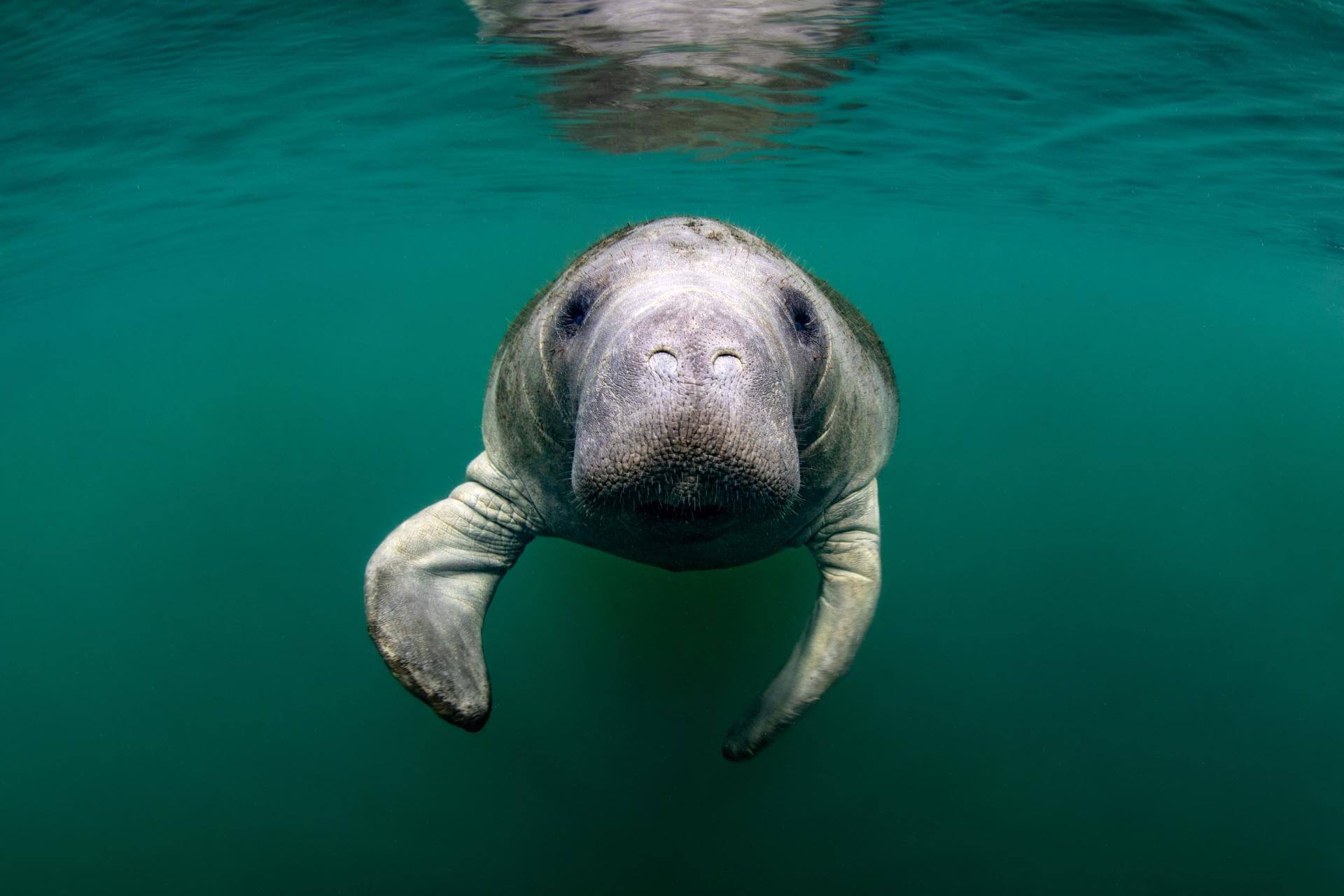Since moving to Florida two years ago, we’ve discovered a number of interesting things about the wildlife here. One of the most interesting was learning that Florida manatee teeth are truly unique in the animal kingdom! Their closest relatives are – elephants! – who also have unique teeth (but I’ll cover that in another post).
Why Manatees are unique in the animal kingdom
Manatees (also known as sea cows) are the only fully aquatic mammals that are entirely vegetarian, and their teeth reflect their lifestyle. They’re also the only aquatic mammals to have a set of continuously growing teeth that are replaced throughout their lives.
They can weigh up to 1,200 lbs. and their favorite food is seagrass that they graze on for half the day – or more – and they can eat up to 10 percent of their body mass per day. But sea grass is tough and wears down their teeth.

Manatee teeth
Manatee molars, which are adapted for grinding and shredding plant material, are their main chewing teeth. These teeth have flat, rough surfaces with ridges that help them break down tough, fibrous grasses. What makes manatee teeth unique in the animal kingdom is that their teeth continuously move forward from the back of the jaw to the front as they wear down, so they always have new teeth coming in. It’s called polyphyodonty. This adaptation is crucial because of their diet.
Unlike many mammals, manatee teeth don’t include incisors or canines. This absence of sharp front teeth allows manatees to graze on aquatic plants without damaging the fragile vegetation or injuring themselves.
More about manatees
They also have the rather unfortunate distinction of having the lowest brain to body size of any mammal. Although not as clever as dolphins (their cousins), they can learn basic tasks and differentiate colors.
Slow-moving and non-aggressive, they are often likened to big, gentle, underwater teddy bears. Because they’re extremely sensitive to touch, it is illegal to touch them. One nature reserve allows swimming with them, but the rule is ‘look but don’t touch’.
Manatees have no natural enemies – except man. This precarious relationship has led them close to extinction due to boat strikes, as well as pollution, which results in – among other things – ‘red tide’, killing the sea grass they feed on and causing mass starvation.

Manatees live in the warm coastal waters and are too slow-moving to get out of the way of propellers on fast-moving boats. This leaves many with prop scars that can be seen on the backs of the animals. Some injuries prove quickly fatal, while others result in infection, which sets in more slowly, later resulting in death.
They are also extremely sensitive to cold. In recent years, sudden cold water conditions in Florida have resulted in mass deaths. Loss of habitat is another ongoing problem, as beach front property continues to be developed.
Conservation efforts and education are ongoing to protect and preserve these gentle animals.
Manatee or mermaid?
Looking at a manatee face today, most people describe them as so ugly they are cute and adorable with their big snout and whiskers, never recognizing just how unique those underlying manatee teeth are. Their faces certainly are NOT what we have come to think of as the beautiful mermaids depicted in books, cartoons and movies, but tens of thousands of people love them just the same.
Early explorers like Christopher Columbus often described ‘mermaids’ (in both their writings and drawings) swimming around their boats when in coastal waters. These were almost certainly manatees and makes one question if the sailors reporting these ‘mermaids’ had, perhaps, been at sea too long!
Learn more on this YouTube video
If you want to learn more about the manatees, I found this You Tube video that you may find interesting.
It’s only 8 minutes and presented by Odyssey Earth, a channel (and website) that presents educational information specializing in Florida-based environmental science, biology, and natural history topics.
References
https://www.smithsonianmag.com/science-nature/14-fun-facts-about-manatees-180950308/
https://www.nationalgeographic.com/animals/mammals/facts/manatees
https://www.sciencedirect.com/topics/agricultural-and-biological-sciences/trichechus-senegalensis (this shows skulls, and is much more scientific)

